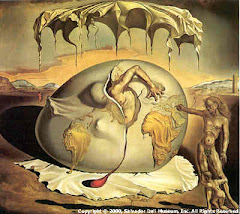In brief summary form, Warren's seven principles of moral status are as follows:
1. The Respect for Life Principle
Living organisms are not to be killed or otherwise harmed, without good reasons that do not violate principles 2-7.
2. The Anti-Cruelty Principle
Sentient beings are not to be killed or subjected to pain or suffering, unless there is no other feasible way of furthering goals that are (1) consistent with principles 3-7; and (2) important to human beings or other entities that have a stronger moral status than could be based upon sentience alone.
3. The Agent's Rights Principle
Moral agents have full and equal basic moral rights, including the rights to life and liberty.
4. The Human Rights Principle
Within the limits of their own capacities and of principle 3, human beings who are capable of sentience but not moral agency have the same moral rights as do moral agents.
5. The Ecological Principle
Living things that are not moral agents, but that are important to the ecosystems of which they are a part, have, within the limits of principles 1-4, a stronger moral status than could be based upon their intrinsic properties alone; ecologically important entities that are not themselves alive, such as species and habitats, may legitimately be accorded a stronger moral status than their intrinsic properties would indicate.
6. The Interspecific Principle
Within the limits of principles 1-5, non-human members of mixed social communities have a stronger moral status than could be based upon their intrinsic properties alone.
7. The Transitivity of Respect Principle
Within the limits of principles 1-6, and to the extent feasible and morally permissible, moral agents should respect one another's attributions of moral status.
Each of these seven principles will require some further explanation. It is also necessary to explain how they interact with one another. In her book, Warren applies these principles of moral status to a wide range of issues, including, abortion, euthanasia, and questions about human responsibilities towards non-human animals, ecosystems, and some kinds of artifacts such as religious or sacred objects. Her goal is to provide a comprehensive theory of moral status that accounts for a wide range of considered moral intuitions about what sorts of things can be the objects of the moral obligations of moral agents or persons.
The Agent's Rights Principle assigns the "strongest" type of moral status to persons, that is, beings who possess the intrinsic properties necessary to full moral agency. Presumably, "weaker" kinds of moral status would be assigned to entities with fewer of the intrinsic and relational properties which she believes confer moral status. Intuitively, a bacterium, which is alive, has some moral status under the Respect for Life Principle, but its moral status is "weaker" than that she would assign to a sentient animal, such as a squirrel, which is weaker still than the moral status she would assign to a person.
The four relational principles operate independently of the three intrinsic property critieria and can add moral status to a thing on top of its status as determined by its intrinsic properties. So, for instance, a beloved family pet, such as my Senegalese green parrot, Pierre, because he is a member of a mixed social community, will normally have a stronger moral status than the wild birds flying around in my backyard, because of her principle six, the Interspecific principle.
While the basic idea of stronger and weaker kinds of moral status is intuitive enough, I think we need more precise language if we are to start comparing different kinds and degrees of moral status across species and with things, like ecosystems and religious artifacts that are not alive. So as a terminological innovation I would like to propose that we employ the terms "moral standing" and "moral stature" as describing different kinds and degrees of moral status. A living being has a different kind of moral status than a work or art or a sacred object; I will say that they have different kinds of moral standing. Similarly, a plant has a different degree of moral status than a snake which has a different degree of moral standing than a chimpanzee, which has yet a different degree of moral status than a human being. I will say that these different kinds of living things have different moral statures, with some having a "higher" stature than others. Standing is on this view an all-or-thing property; things either have a kind of moral standing or they don't. Stature, on the other hand, is a graded property. Things can have different degrees or grades of moral stature even though they may have the same moral standing.
I will also employ the term "moral plateau." A moral plateau signifies the kind and degree of moral status that things of a certain kind of thing occupies. Whether a particular entity or organism occupies a particular moral plateau is a function of both its moral standing and its moral stature. The value of these terms will, I expect, become evident as I proceed with my elaboration of Warren's multi-criterial theory of moral status. These concepts will help us grapple with some important issues concerning conflicting moral responsibilities and the question of whether we shoud treat moral patients impartially or partially.




